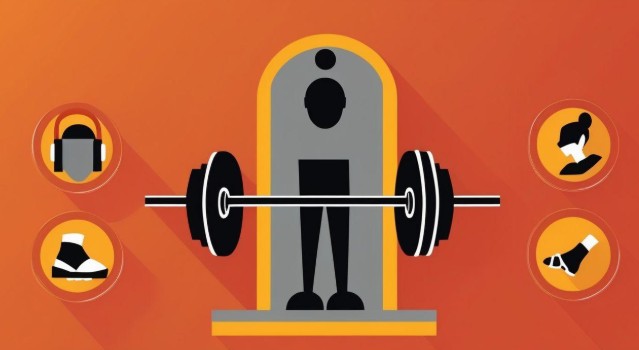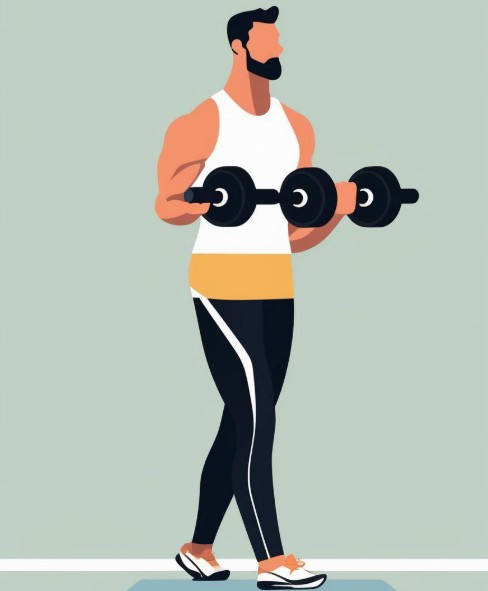5 Hidden Hazards in Gyms That Could Be Putting You at Risk
5 Hidden Hazards in Gyms That Could Be Putting You at Risk
Ensuring the safety of your gym is essential for creating a secure and supportive environment.
Members can focus on achieving their fitness goals, instead of worrying about hazards.
From properly maintained equipment and clearly marked emergency exits to trained staff and strict cleanliness protocols, every aspect of gym operation should prioritize member well-being. Implementing comprehensive safety measures helps prevent accidents, reduces liability, and fosters trust among gym-goers.
To demonstrate a commitment to health and safety, include:
- Regular safety audits
- Clear guidelines for equipment use
- Immediate attention to hazards
- Sanitary protocols
A safe gym not only protects its users but also enhances their overall workout experience.
1. Slippery Floors and Locker Rooms
Moisture is one of the most common and preventable hazards in gyms. Wet floors in locker rooms, around showers, or near water fountains pose a serious slip-and-fall risk. Entryways on rainy days can also become slick if not properly maintained, especially when mats or traction surfaces are missing.
Surfaces like tile, polished concrete, and laminate become dangerous quickly when water or sweat accumulates. Even minor spills, if not cleaned promptly or marked with warning signs, can lead to falls that result in ankle sprains, lower back injuries, or more serious trauma.
Unfortunately, signage isn’t consistently used as it should be.
Some gyms rely on cleaning staff to monitor and mark wet areas, but during high-traffic periods, oversight is often lacking.
Members might also unknowingly contribute to the problem by walking out of shower areas while dripping wet or tracking in moisture from outdoors.
Understanding how quickly these conditions can become dangerous underscores the importance of attentive staff, proper signage, and design choices such as slip-resistant flooring.
2. Poorly Maintained or Faulty Equipment
Equipment wear and tear is inevitable in busy gyms, but how it’s managed makes all the difference.
When maintenance is delayed or skipped entirely, members are left vulnerable to unexpected equipment failures.
Frayed cables, loose handles, shaky benches, or unbalanced cardio machines may not be obvious at first glance, but can cause serious injuries during use. Free weights and resistance tools also present a hazard when they show signs of damage. A cracked kettlebell or resistance band with hidden tears could fail mid-rep, causing strain or impact injuries.
Most members assume machines are safe to use, which is why facilities must prioritize routine inspections.
Warning signs or out-of-order tags should be visible and enforced. Staff should remove broken items from the floor, not just label them and leave them accessible.
Neglecting equipment upkeep can raise legal questions, especially if an injury could have been prevented. In Illinois, for example, someone harmed by facility negligence may choose to speak with a slip-and-fall accident lawyer in Champaign to explore their legal options and determine whether safety standards were met.
3. Inadequate Lighting or Poor Visibility
Lighting plays a crucial role in overall gym safety. Dim, uneven, or flickering lighting reduces visibility and increases the likelihood of missteps. Hazards like spilled liquids, equipment left out of place, or uneven flooring are harder to detect without proper lighting.
Stairwells, back corridors, and low-traffic areas of large gyms are often the least well-lit. These spots may be overlooked during inspections or intentionally kept dim for ambiance, creating conditions where accidents are more likely.
Low visibility isn’t just a hazard for walking. It can also impair safe equipment use. A member might misread machine instructions, miss a warning label, or fail to properly align themselves with the equipment due to shadows or glare.
Facilities must ensure uniform lighting across all areas, including main floors, locker rooms, hallways, and functional spaces. Inadequate lighting contributes to a perception of neglect and reduces member confidence in the environment.
Keeping a safe workout environment requires a blend of smart layout design and proactive maintenance. Elements like proper lighting, equipment spacing, and hazard awareness are essential. Following guidelines for maintaining a safe & sanitary workout environment helps gyms create spaces where members feel both comfortable and protected.
4. Cluttered Workout Areas and Obstructed Pathways
A cluttered gym floor can quickly become hazardous, especially during peak hours. Weights scattered around racks, resistance bands left on the ground, or gym bags placed near machines can create tripping hazards for unsuspecting members.
- Poorly organized layouts are also problematic.
- Narrow walkways between equipment reduce maneuverability and can make it hard for people to avoid others in motion.
- This is particularly dangerous when lifters are transitioning between sets or carrying heavy equipment.
- In the event of a medical emergency, cluttered areas can delay response time.
- Emergency exits and first aid stations should always be accessible, and staff must be able to reach injured members without having to navigate through personal items or stray equipment.

To maintain a safe environment, facilities should implement and enforce rules regarding re-racking weights and the storage of personal belongings. Daily floor checks are also necessary to ensure compliance. Members can contribute by staying mindful of where they place their items and returning equipment promptly after use.
An open, organized gym floor doesn’t just improve the member experience; it also enhances the gym’s overall operations. It also significantly lowers the risk of preventable accidents.
5. Lack of Proper Safety Signage or Instructions
Safety signage and clear instructions are key to helping members navigate gym spaces responsibly. Missing or poorly placed signs increase the likelihood of misuse – especially among beginners who rely on visual cues to learn equipment.
When warnings aren’t visible, someone might use a machine that’s under repair or walk into an area with a known hazard. Failing to notice a caution sign for a slippery surface or misunderstanding a posted guideline can easily lead to injury.
Instructions for complex or multi-function equipment should be simple, visible, and free of technical jargon. Emergency protocols, cleaning procedures, and re-racking policies should be consistently posted and maintained.
Visual communication plays a crucial role in setting expectations for safety. Gyms that lack clear, accurate signage are not only less safe – they also appear less professional and attentive to member well-being.
Tips for Staying Safe at the Gym
While facilities are responsible for maintaining safe conditions, gym-goers can take several steps to protect themselves. Awareness is the first line of defense. Take a moment before each session to assess your surroundings – check the floor for obstacles, confirm that your equipment is in good condition, and ensure the lighting is adequate.
Wearing appropriate footwear is essential, particularly in areas prone to moisture or with poor traction.
Shoes designed for training can improve stability and reduce the chance of slipping.
Avoid placing personal items in walkways, and never assume equipment is safe without a quick inspection. If something looks off – whether it’s a loose bolt, frayed cable, or puddle – report it to staff immediately.
Pushing your limits is part of training, but knowing when to hold back is equally important. That’s why pre-workout health screening is essential for gym safety. A health check helps you avoid overtraining and prepares you to exercise within your capabilities.
Safe habits aren’t complicated. A little attention and preparation go a long way in preventing common injuries and allowing gym members to lift, gain muscle and progress with exercises.

Safety First!
Gym injuries aren’t always caused by improper technique. Environmental risks like wet floors, broken equipment, poor lighting, and cluttered walkways are often to blame. These issues can usually be prevented with regular maintenance and a commitment to safety.
Members should stay alert and take personal precautions, but the foundation of a safe gym lies in how well the facility is managed. When both sides contribute, the risk of injury drops – and the quality of every workout improves.

